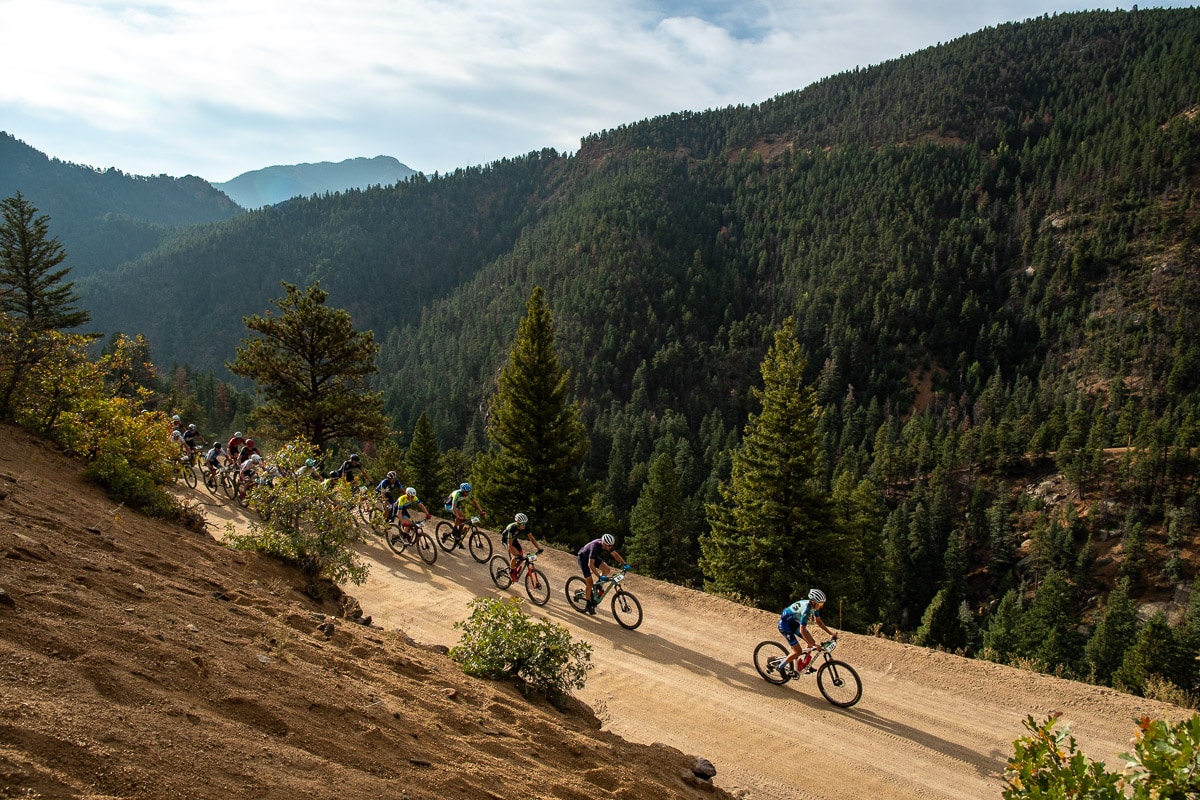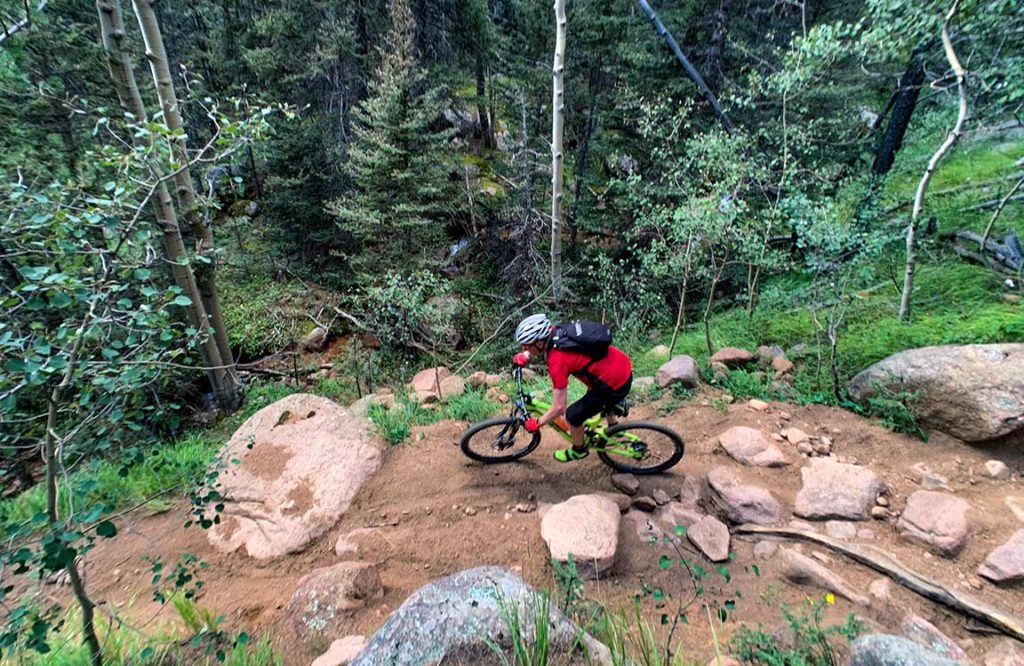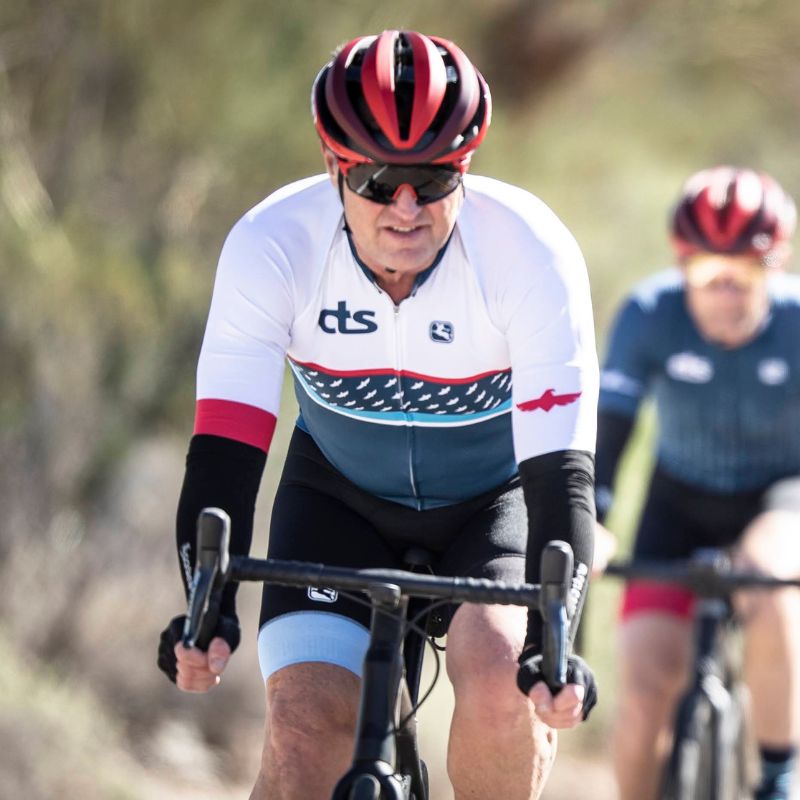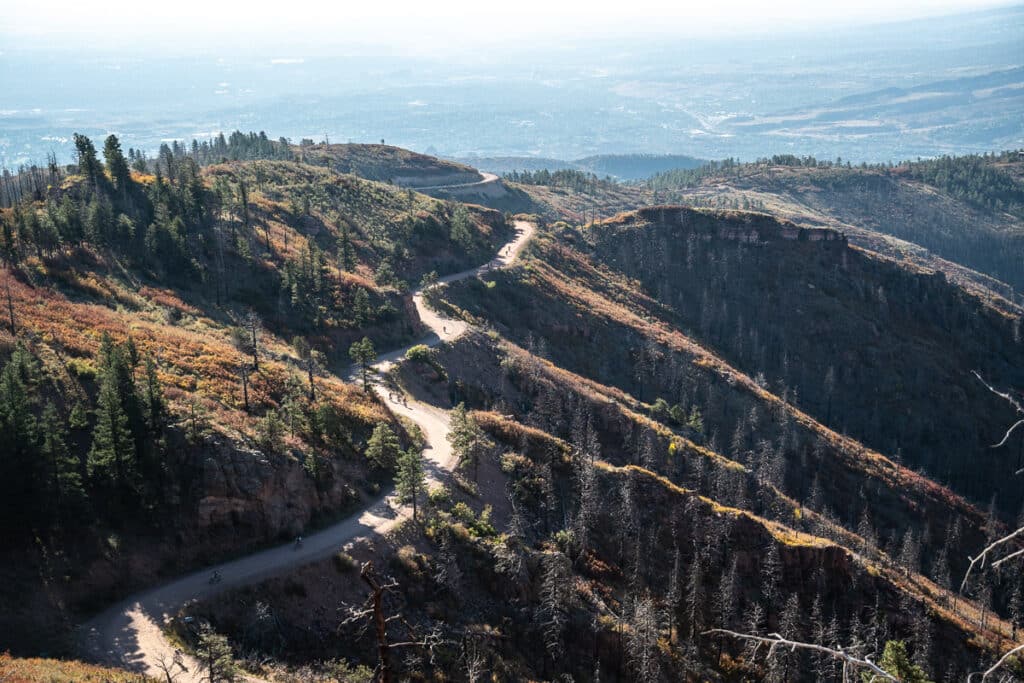
How to Eat and Drink for The Pikes Peak Apex and Multi-Day MTB Adventures
By Chris Carmichael,
CEO/Head Coach of CTS
The Pikes Peak APEX presented by RockShox covers just over 125 miles over 4 stages, features more than 14,000 feet of climbing, and showcases four iconic Colorado Springs-area trail systems. Mountain bike stage races and multi-day adventures present unique nutrition and hydration challenges, so whether you are coming to Colorado for the Pikes Peak APEX or embarking on your own mountain bike trip, here’s how to fuel for success.
Eat breakfast – but not too much
Many events feature early start times. While some riders might wake up early enough to eat 2-3 hours ahead of the start, many will sleep in a bit and eat about an hour beforehand instead.
When eating sooner before a long day on the bike, it is wise to eat a lighter meal so you can digest it and avoid starting feeling full or bloated. Try a couple of eggs for protein and fat, and carbohydrates from cereal, a bagel or bread, or a bowl of rice or potatoes. If you eat dairy, a bowl of cereal and yogurt can be a good combination.
The big thing is not to stuff yourself. Yes, you have a long day on the bike ahead of you, and especially after the first day you’ll likely be hungry in the morning. However, for sustained energy and to feel good in the first hour (which is often a high pace), I recommend eating a smaller breakfast and starting to consume food on the bike sooner.
Feel Stronger in 6 Weeks — No Matter Your Age
Climbs feel steeper? Recovery slower?
You’re not done getting faster — you just need a smarter plan.
The 6-Week Masters Power Build Coaching Program is designed for cyclists 50+ who want to boost power, recover faster, and ride stronger — all with expert 1:1 coaching.
- Personalized 6-Week Training Plan
- 1:1 Coaching + TrainingPeaks Premium
- Mobility & Strength Bonus Guides
💪 Guarantee: Stronger or free.
Start your 6-week journey for $149Start drinking early
When you are on the bike 4+ hours per day for multiple days, keeping up with hydration can be a real challenge. In the mornings the weather is cool, so people don’t feel like drinking very much. But the afternoons get warm, and the hours start to add up. After the first day you can catch up on hydration if you get behind. But catching up gets harder with each passing day, and the result is that your morning hydration status gets progressively worse. This makes the first hour on the bike more difficult, which means you push yourself harder to maintain your performance. Pretty soon you’ll pay for those harder efforts and have an energy or hydration crisis.
Drinking early doesn’t mean guzzling fluids or drinking to a strict schedule. It means you should aim for a bottle per hour, even early in the day when the temperatures are cooler. The mistake people make is to ride for 60-90 minutes before even reaching for their bottle.
Athletes coming to the Pikes Peak APEX should be prepared for dry, high-desert conditions at moderate altitude (6,000 – 9,000 feet above sea level). The low humidity and altitude contribute to increased fluid loss, and sweat can evaporate so quickly that athletes from lower altitudes may miss the visual cues and sensations associated they normally associate with high sweat rates. Athletes experience similar effects at any moderate- to high-altitude events, including the Leadville 100, Breck Epic, or SBT GRVL.
Bottles or hydration pack?
Aid stations are one of the best things about endurance mountain bike races because they often provide the opportunity to lighten your hydration pack or exclusively use bottles instead. On the other hand, a hydration pack may eliminate the need for one or more stops, which may save time and further support social distancing.
If you’re going to use a hydration pack in a race, you have to find a way to determine how much fluid you’re consuming. Because you can see and feel the weight of a bottle in your hand, and because of the smaller unit volume, it is often easier to track fluid consumption via bottles. It is harder to figure out how much of a hidden two-liter hydration bladder you’ve consumed. Some riders solve this problem by using a timer to remind them to drink at least 3 times per hour, and a counter (either seconds or gulps) to approximate fluid intake.

Adapt Hydration During the Day
Morning starts – particularly in the Rocky Mountains – are cool or downright chilly, and temperatures rise quickly. At lower elevations and more humid environments, air temperatures are more stable, meaning the fluctuation between morning lows and afternoon highs is not as great.
The amount of fluid you need to consume per hour is heavily affected by exertion, body temperature, and environmental temperature/humidity. Cool mountain mornings help moderate fluid requirements early on, but riders have to be prepared to increase consumption as temperatures rise. In hot weather, I recommend shifting the priority to water in the bottles and calories in the pockets so riders can ramp up fluid intake to account for increased water losses, while keeping energy consumption to 40-90 grams of carbohydrate per hour and electrolyte intake to 500-700mg per hour.
For riders using bottles, this often means incorporating one bottle of hydration mix, (like Fluid Performance) per hour, in addition to calories and electrolytes from foods. For riders using a hydration pack, I recommend plain water in the pack, hydration mix in a bottle if you’re carrying one, and calories/electrolytes from foods.
Eat a variety of foods on the bike
Maintaining interest in eating is one of the bigger nutritional challenges during multiday events, which is why it’s important to have lots of options, textures, and tastes available. There are a lot of ways to consume 40-90 grams of carbohydrate per hour, from sandwiches to fruit, potatoes to ProBars. Gels and chewables are great as well, particularly when athletes are either going hard and need something they can consume fast, or toward the end of the day when they benefit from rapidly available carbohydrate.
► Free Cycling Training Assessment Quiz
Take our free 2-minute quiz to discover how effective your training is and get recommendations for how you can improve.
That range – 40 to 90 grams per hour – is very broad on purpose. The rule of thumb is that you can digest and absorb 1 gram of carbohydrate per minute, or 60 grams per hour. With mixed sugar sources (fructose and glucose instead of just glucose, for instance) and through training your gut to process greater volumes of food, you can increase absorption to about 90 grams/hour.
But you don’t always need to maximize carbohydrate intake. If you’re not riding hard, you may be just fine with 45-50 grams/hour. You want to be careful to adjust fueling based on how you feel, your intensity level, your hydration status, and the temperature. I encourage athletes to err on the side of slightly under-eating on the bike, because running low on calories is a problem you can fix in a few minutes (as long as you’re carrying food). Overeating causes more problems because digestion slows when you are dehydrated, hot, or working extremely hard. This means food stays undigested longer, which increases the chances for nausea and bloating.
For cyclists with power meters, I recommend consuming calories equal to 20-30% of their hourly kilojoule output. So, if you’re doing 600 kilojoules of work per hour, aim for 120-180 calories per hour, which is 30-45 grams of carbohydrate.
Eat in the final hour of the ride
It is critical for athletes to continue eating and drinking on the bike into the final hour before the finish. You don’t necessarily need the fuel to get to the finish, but you want to avoid digging a hole in terms of energy or hydration. You’re eating and drinking in the last hour to enhance recovery and to have a stronger tomorrow.
Specific to the Pikes Peak APEX, two stages feature 9- to 12-mile transitions (generally downhill) from the end of timing back to the start/service area. That means you shouldn’t just plan your eating around getting to the finish line, but also taking into consideration the additional 30-40 minutes on the bike after the finish line. It can make a big difference when you have another big day on the bike tomorrow!
Recovery drink
I recommend post-ride recovery drinks when athletes do more than 1500Kj of work during a ride (which is almost always the case in multi-day events), and when riders are training or doing events on back-to-back days. A bottle of Fluid Recovery, for instance, has 30 grams of carbohydrate and 10 grams of protein, a ratio that helps promote glycogen replenishment and provides protein for muscle and immune system support. When CTS provides race support at multi-day events, as well as during camps, we hand athletes a recovery drink as soon as they get off the bike and provide a post-ride meal within about 60 minutes.
Post-Stage Meals
With early-morning starts, stages in multi-day events often finish in the early afternoon. A moderate-sized post-stage meal that’s rich in carbohydrate and protein is sufficient for promoting recovery, but even after a hard day riders don’t need to have a huge post-stage meal. You’ll often be tired, hot, and somewhat dehydrated, so a moderate meal will be satisfying without making you nauseated or overfull. Some simple favorites include a sandwich or burrito with fruit or chips.
Dinner is often more complex, and I think it’s important to remind athletes to eat some concentrated carbohydrates like rice, potatoes, or pasta in addition to green and colorful vegetables (and protein and fat). Many athletes have reduced their consumption of concentrated carbohydrate sources in their everyday lifestyles, but when you increase your daily workload and have big back-to-back days on the bike, you need lots of carbohydrate energy in a reasonable volume of food.
One final note: Save the beer for the final day! I know it’s tempting to finish each day with a beer (and Colorado Springs has some great breweries!), but one too often leads to two or more, and alcohol does you no favors in terms of hydration, recovery, or quality sleep. Stay focused on having great days on the bike, then celebrate after the final stage!
► FREE Mini-Course: Learn How to Maximize Your Limited Training Time
Learn step-by-step how to overcome limited training time and get faster. Walk away with a personalized plan to increase your performance.
"*" indicates required fields



Comments 3
Thank you Paul, very useful information.
Good advice to baseline hydration and feeding strategy for events 👍
Pingback: Cycling Skills That Save You Tons of Energy - Chris Carmichael